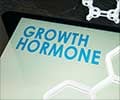In a first of its kind study, scientists at the Buck Institute for Age Research have uncovered biomarkers of aging, which can predict both chronological and physiological age.
In a first of its kind study, scientists at the Buck Institute for Age Research have uncovered biomarkers of aging, which can predict both chronological and physiological age.
Biomarkers are biochemical features that can be used to measure the progress of disease or the effects of treatment.The scientists conducted the study by using nematode worms, microarrays which measure changes in gene expression, and complex computer algorithms.
And they believe that the step could help them identify similar biomarkers in humans, which would provide a means of scientifically validating anti-aging therapies.
Chronological and physiological age are rarely in sync. Determining chronological age in both worms and humans is easy - count forward from birth. Determining physiological age remains subjective - based on how someone looks or functions.
Some 70 year old humans function at the level of those in their 50's, others become frail elderly sooner than would be expected. C. elegans, the nematode worm, is a similar creature.
Having an average lifespan of three weeks, some nematodes remain active much longer than then their similarly-aged brethren, while others show signs of premature aging (lack of symmetrical appearance, uncoordinated motion, and the need to be prodded into movement).
Advertisement
The study revealed a suite of genes that are actively involved in the aging process.
Advertisement
The study has implications for age research in humans.
Examining biomarkers over time would provide a scientific baseline for clinical trials of anti-aging medicines, which is currently impossible to determine given the lengthy lifetime of human beings.
The technology would also provide a means of determining whether an individual is aging faster or slower than would normally be expected.
The research is appearing in the latest online edition of Aging Cell.
Source-ANI
SRM









